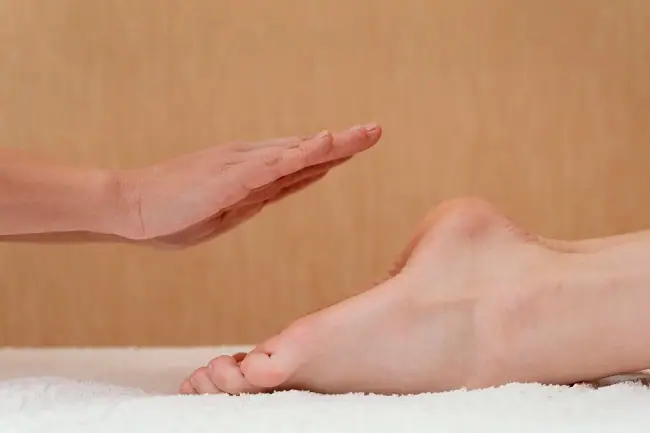Do you love running but hate the nagging heel pain that follows? If you’re an athlete, chances are you’ve heard of plantar fasciitis. This common foot ailment can put a real damper on your training regime. But don’t worry—there are effective ways to prevent and manage it.

In this post, we’ll explore practical tips and strategies that will help you keep plantar fasciitis at bay and stay on track with your athletic goals.
What is Plantar Fasciitis?
Plantar fasciitis is an inflammation of the plantar fascia, a thick band of tissue that runs across the bottom of your foot, connecting your heel bone to your toes. When this tissue becomes irritated or inflamed, it causes sharp, stabbing pain, usually near the heel. This condition is especially common among runners and athletes who put a lot of strain on their feet.
Why Do Athletes Get Plantar Fasciitis?
Athletes are particularly susceptible to plantar fasciitis due to the high impact and repetitive stress placed on their feet. Activities such as running, jumping, and even long-distance walking can lead to tiny tears in the plantar fascia. Over time, these tears can cause inflammation and pain. Wearing improper footwear, having flat feet, or suffering from obesity can also increase your risk.
Symptoms to Watch For
Recognizing the symptoms early can help you take action before the condition worsens. Common signs include:
- Sharp heel pain upon waking up
- Pain that decreases throughout the day but returns after prolonged standing or activity
- Swelling in the heel area
If you experience any of these symptoms, it’s crucial to start managing them right away to prevent further damage.
The Importance of Proper Footwear
One of the simplest yet most effective ways to prevent plantar fasciitis is by wearing the right shoes. Athletic shoes should provide adequate arch support, cushioning, and fit well. Avoid shoes with worn-out soles or poor support, as they can exacerbate the condition. Consider getting custom foot insoles in Orem to provide extra cushioning and support tailored to your specific needs.
Stretching and Strengthening Exercises
Incorporating stretching and strengthening exercises into your routine can significantly reduce your risk of developing plantar fasciitis. Focus on stretches that target the calf muscles, Achilles tendon, and plantar fascia. Strengthening exercises for the lower legs and feet can also help improve stability and reduce strain on the plantar fascia.
Calf Stretch
Stand facing a wall with one foot in front of the other. Keep your back leg straight and your heel on the ground. Lean forward, pressing your front knee towards the wall until you feel a stretch in your back calf. Hold for 30 seconds and switch legs.
Towel Stretch
Sit on the floor with your legs extended. Loop a towel around the ball of your foot and gently pull it towards you while keeping your knee straight. Hold for 30 seconds and switch feet.
Toe Curls
Sit in a chair and place a towel on the floor. Use your toes to scrunch the towel towards you, then push it back out. Repeat 10 times on each foot to strengthen the muscles in your arches.
The Role of Rest and Recovery
Rest and recovery are crucial components of any athlete’s training regime, especially when dealing with plantar fasciitis. Giving your feet time to heal can prevent the condition from worsening. Consider incorporating low-impact activities such as swimming or cycling into your routine to maintain fitness without putting additional strain on your feet.
Ice and Anti-Inflammatory Treatments
Applying ice to the affected area can help reduce inflammation and alleviate pain. Wrap an ice pack in a towel and place it on your heel for 15-20 minutes several times a day. Over-the-counter anti-inflammatory medications like ibuprofen can also help manage pain and swelling.
Massage and Myofascial Release
Massaging the plantar fascia can promote blood flow and reduce tension. Use a tennis ball or a specialized foot roller to gently massage the bottom of your foot. Roll the ball back and forth under your foot for a few minutes each day to keep the tissue relaxed and flexible.
Weight Management
Maintaining a healthy weight can reduce the strain on your feet and lower your risk of developing plantar fasciitis. Even a small amount of weight loss can make a significant difference. Incorporate a balanced diet and regular exercise into your lifestyle to keep your weight in check and support overall foot health.
Orthotics and Inserts
Orthotic devices and inserts can provide additional support and cushioning for your feet. Custom orthotics, in particular, are designed to fit the unique contours of your feet and can help distribute pressure more evenly. Consult with a podiatrist to determine the best type of orthotic for your needs.
When to See a Doctor
If your symptoms persist despite taking preventive measures, it may be time to see a doctor. A healthcare professional can provide a thorough evaluation and recommend treatments such as physical therapy, cortisone injections, or even surgery in severe cases.
Plantar fasciitis doesn’t have to sideline you from your athletic pursuits. By understanding the condition and taking proactive steps to prevent and manage it, you can keep your feet healthy and pain-free. Remember, the key to success lies in wearing proper footwear, incorporating stretching and strengthening exercises, and giving your feet the rest they need. If you’re still experiencing discomfort, don’t hesitate to seek professional advice.
Don’t let plantar fasciitis hold you back. Take charge of your foot health today and continue to enjoy the activities you love!







